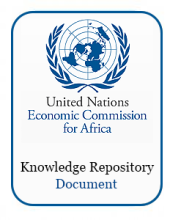/ library resources
Showing items 1 through 9 of 13.Understanding the combined and separate effects of climate and land use change on the water cycle is necessary to mitigate negative impacts.
International Water Management Institute (IWMI).
Author Posting. © The Author(s), 2009. This is the author's version of the work. It is posted here by permission of IOP Publishing for personal use, not for redistribution. The definitive version was published in Environmental Research Letters 4 (2009): 044008, doi:10.1088/1748-9326/4/4/044008.
In many environmental and conservation policy contexts, gaps are observed between policy objectives and implementation outcomes.
Land grabs in the wake of a disaster are nothing new. However this phenomenon gains certain particularities and interest when it happens within the current context of climate change policy initiatives and the global land rush.
This document focuses on the Side event COP21: Climate Research for Development in Africa (CR4D).
Climate variability lies behind much of the prevailing poverty, food insecurity and weak economic growth in Africa today. Climate change will increase this variability; the severity and frequency of droughts, floods and storms will increase, leading to more water stress.
To date, all global assessments have concurred that Africa is the Earth’s most vulnerable region to climate change. The severity of Africa’s vulnerability to climate change was confirmed by the IPCC Fifth Assessment Report.
Climate change represents a fundamental challenge to the sustainability of Africa‘s growth momentum. It is imperative therefore that African countries invest in mechanisms that would mainstream climate change into their development strategies to stave off its possible negative impacts.
Pagination
Land Library Search
Through our robust search engine, you can search for any item of the over 73,000 highly curated resources in the Land Library.
If you would like to find an overview of what is possible, feel free to peruse the Search Guide.


